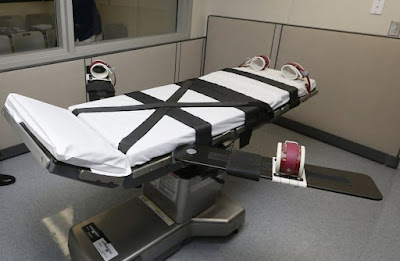OKLAHOMA CITY (KOKH) — The interval between executions in Oklahoma will grow to 90 days, the Oklahoma Court of Criminal Appeals ruled on Tuesday.
The court also decided against setting execution dates for a group of death row inmates, which has been done since 2022.
In 2022, the court set execution dates in approximately 30-day intervals for a group of 25 inmates. The court divided the death row cases into four phases consisting of six inmates each and one phase consisting of one inmate being set for execution.
In 2023, the State filed a motion to reset the execution dates at 60-day intervals for the phase two inmates. The court granted the state's request.
This year, the state requested the execution interval grow to 90 days for the remaining phases. The court acknowledged increasing the interval, but decided to deny letting the state set the remaining execution dates as a group.
The court said unforeseen delays could derail the group dates, which could go against ensuring that an execution progresses in a timely manner.
Rather, the court will proceed to set executions one at a time, so long as it meets certain criteria:
- The execution should occur at approximately ninety-day intervals
- Executions should be set on a Thursday
- DOC requires a minimum of 35-day notice that a defendant is scheduled for execution.
The Attorney General's Office must notify the Court of Criminal Appeals of a death warrant that will have the next eligible inmate included.
Inmates are scheduled to be executed when they have exhausted all possible appeals.
In his dissenting opinion, Judge Gary Lumpkin questioned why the Attorney General wanted to increase the time between executions for the third time. Judge Lumpkin also questioned leadership and staffing at DOC.
"Regardless of how a person feels about the death penalty, it is a part of the law established by the Oklhaoma Legislature," Judge Lumpkin opined. "Amendments to those laws made in recent years reveal the Legislature has set a priority on expediting them. Until the Legislature changes the procedures, it is the responsibility of each person involved in that process to perform his or her duties in a timely manner. This is true whether it be judges, prosecutors, or those charged with carrying out the judgement and sentence entered by the citizens who served on the juries in each of these cases."
Judge Lumpkin said the state first extended the period in between executions after the botched execution of Clayton Lockett in 2014. The DOC then established a new protocol to wait 35-days between executions, but that new protocol was never approved by the state legislature.
That 35-day protocol was the State's main argument for extending the time period between executions again, so DOC employees could better prepare for the next one.
Judge Lumpkin said DOC employees could "meet the challenges placed before them when proper leadership is provided."
Currently, there are seventeen inmates that have exhausted all of their appeals and are awaiting execution dates.
Source:
okcfox.com, Colleen Wilson, May 7, 2024
_____________________________________________________________________
"One is absolutely sickened, not by the crimes that the wicked have committed,
but by the punishments that the good have inflicted."
— Oscar Wilde












